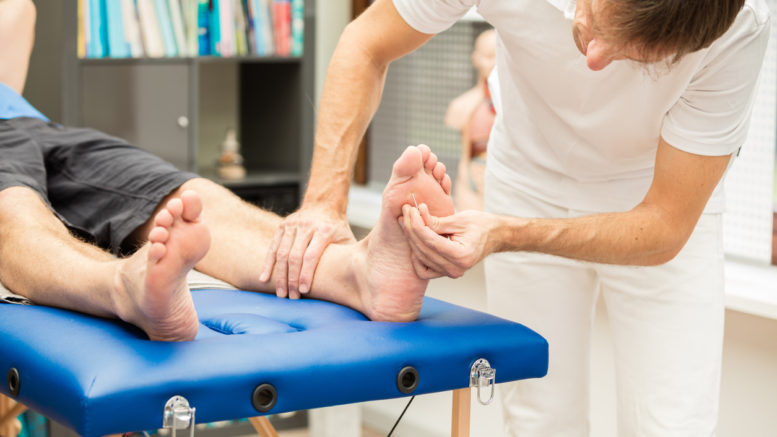Are you a diabetic patient who manages your disease by taking medicines, tracking your sugar levels, and visiting a specialist now and then? If yes, well done because this disease demands lots of attention and care.
However, have you ever visited a podiatrist to look after your feet? Diabetes is a chronic health issue that can cause several health issues, including problems in your feet.
While an endocrinologist should be your preferred specialist to treat diabetes, you should also get checked to detect and treat any foot problem while you fight this illness.
Here’s how a podiatrist can prove helpful for you by simplifying your diabetic care.
Foot Problems in Diabetes
When it comes to treating diabetes, you shouldn’t take anything lightly.
It is common to develop foot pain during this illness. Treatment is imperative early so it doesn’t get worse.
These issues don’t happen suddenly. A high level of blood sugar in a diabetic patient can affect the nerves and blood vessels of your feet.
The damage is referred to as diabetic neuropathy. It can cause symptoms like tingling pain and numbness.
In worse cases, you may also develop gangrene. This foot ulcer leads to damaging your skin, muscles, and tissues.
There is a specific treatment for this disease. If it doesn’t get better, an amputation is necessary.
Why Do You Need a Podiatrist?
A podiatrist is a medical expert that specializes in detecting and treating different ankle and foot disorders. They also look after diabetic patients, so they can prevent or get treated for all the foot-related issues caused by their health problems.
Also known as the foot doctor, a podiatrist should be a part of your healthcare team. The specialist is responsible for treating several issues:
- Foot injuries
- Foot pain
- Abnormalities in feet
- Heel pain
- Nail and skin condition
As a diabetic patient, self-care is crucial to managing this illness. This is because even a tiny cut can cause severe implications, such as an amputation.
Therefore, you should always check your feet for any harmful signs and consult a podiatrist as soon as possible.
Checking Your Feet for any Signs
- Start with removing your socks and shoes.
- Check the bottom and top of your feet. Also, investigate the space between the toes.
- If you can’t see yourself as a family member, have a look.
- Look for cuts, rashes, or sores.
- Also, investigate any change in the shape of your feet.
- If you feel any tingling sensation or continuous pain, don’t ignore it.
When Should You See a Podiatrist?
Whether you have foot-problem symptoms or not, meeting a podiatrist and getting a thorough check-up is always a good idea.
Unfortunately, things can flare up quite quickly in diabetes. Therefore, you need to be very careful and take even a slight discomfort seriously.
- Through testing and investigation, the podiatrist detects any nerve damage.
- The specialist then conducts X-rays, MRIs, and CT scans to detect damaged blood vessels or fractured bones.
- A podiatrist also treats different foot injuries, fractures, and ulcers.
- They may also suggest certain shoes to help you walk properly.
- A podiatrist is trained enough to give you a self-care routine for your feet.
How to Find the Best Podiatrist?
Do you need guidance finding the best podiatrist? Here are a few tips.
- Start with asking family and friends for recommendations. They can suggest specialists who have hands-on experience.
- Search online and look for a podiatrist with positive reviews. Don’t settle for a mediocre specialist or one with too many negative reviews.
- When choosing a podiatrist, go with one affiliated with a reputable hospital. Your specialist should also be board-certified.
- Finding a podiatrist can be tough, especially when they aren’t close to your area. So, find a specialist that can serve you near your house.
Podiatrists Making Diabetic Foot Care Easy
You can also opt for a virtual consultancy. This is a revolutionary approach to detect and treat your foot problems under your own roof or in a facility nearby.
Podiatrists also treat problems like foot swelling, healing pain, and gout. Make sure you are open with your specialists about your symptoms, and be consistent with the scheduled consultancy sessions.
Final Takeaway
Unfortunately, many diabetic patients take their feet for granted, and that’s one of the wrong things they do while looking after themselves. Diabetes management is imperative, regardless of age, intensity of symptoms, or gender.
If you feel pain and have visible swelling or numbness in your feet, don’t wait for it to go bad. See a reputable podiatrist, whether online or through visiting their cloning, and get tested.
Other than that, keep your feet clean, wear tidy shoes, eat well, exercise, and hydrate your skin as much as possible.
Take care of yourself, and take your specialist’s guidance seriously to stay healthy.
